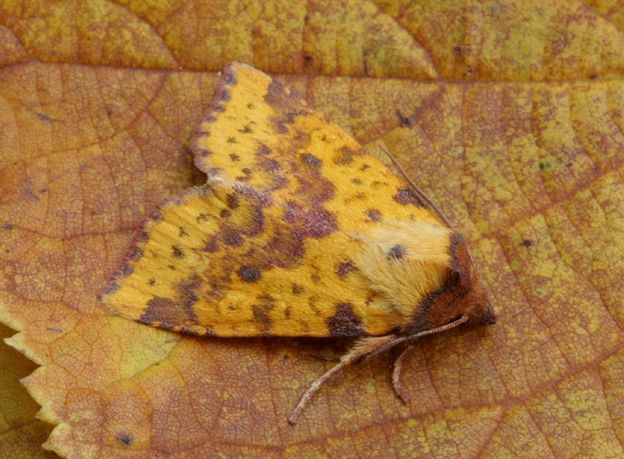- info@sirhowyhillwoodlands.co.uk
- Thomas Ellis Way, Tredegar NP22 4QF
- About Us
- Get involved
- Visit Us
Visit Tredegar & our Woodlands
Come and visit us!
Sirhowy Hill Woodland
Thomas Ellis Way
Tredegar
Blaenau Gwent
NP22 4QF - Wildlife
- Woodland Shop
Latest and greatest products, direct from our
Woodland Shop
Sourced from the Woodlands and the local community.
You have
item(s) in your bag
- Home
- /
- Blog
- /
- Animals & Wildlife
- /
- Moths
- /
- Pink-barred Sallow

Scientific name: Xanthia togata
Pink-barred Sallow
September to October in the south, August to September in the north. Common throughout Great Britain.
This moth is most easily distinguished from other sallows by the deep red or pinkish-brown head and shoulders in contrast to the yellow thorax. The bright orange-yellow forewing is slightly hooked with deep-red or reddish-brown markings forming a bar from the leading to trailing edge.
They overwinter as eggs, laid in short rows on twigs close to the tree buds. The larvae can be found between late March and early June.
What does the Pink-barred Sallow eat?
The Pink-barred Sallow feeds on the catkins of sallows and poplars, and when more mature on herbaceous plants such as docks.
What habitat does the live in?
The Pink-barred Sallow mainly lives in in broadleaved woodland, marshes and fens but also occurs in other places where the foodplant grows including gardens.
What family does the Pink-barred Sallow belong to?
The Pink-barred Sallow belong to the Noctuidae family.

Click to view more
Statistics
Scientific Name
Xanthia togata
Location
England, Wales, Scotland and Ireland
Size
Small sized
Wingspan Range: 26-32mm
Population
Common and well distributed throughout most of Britain

Other Wildlife







